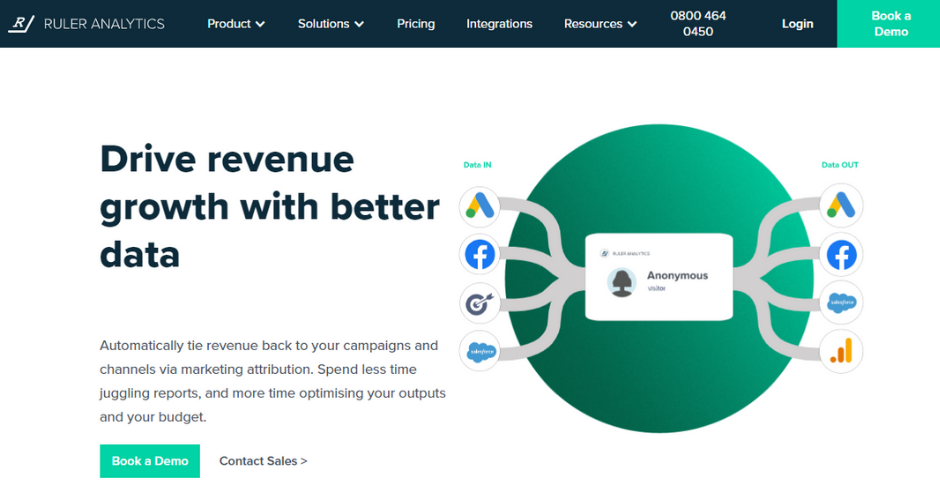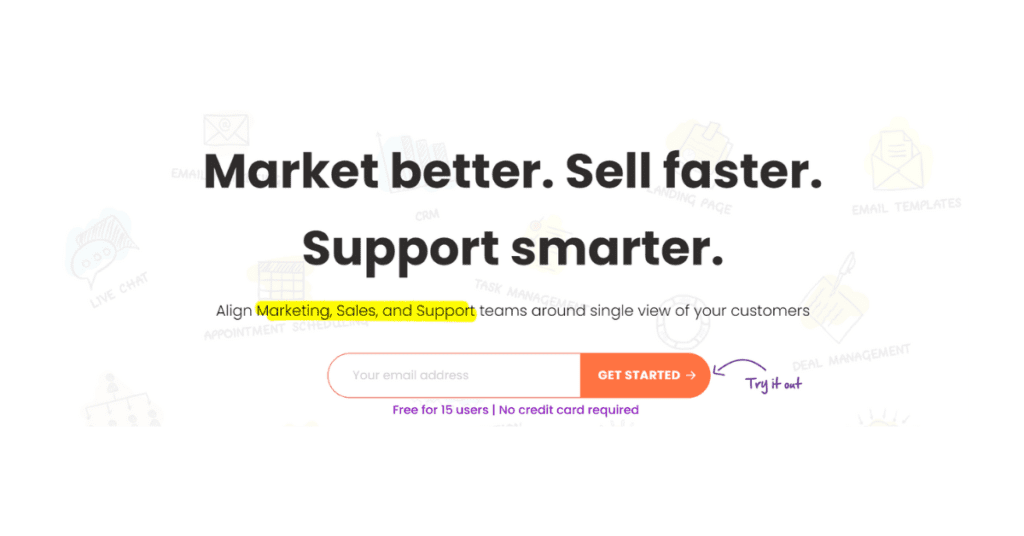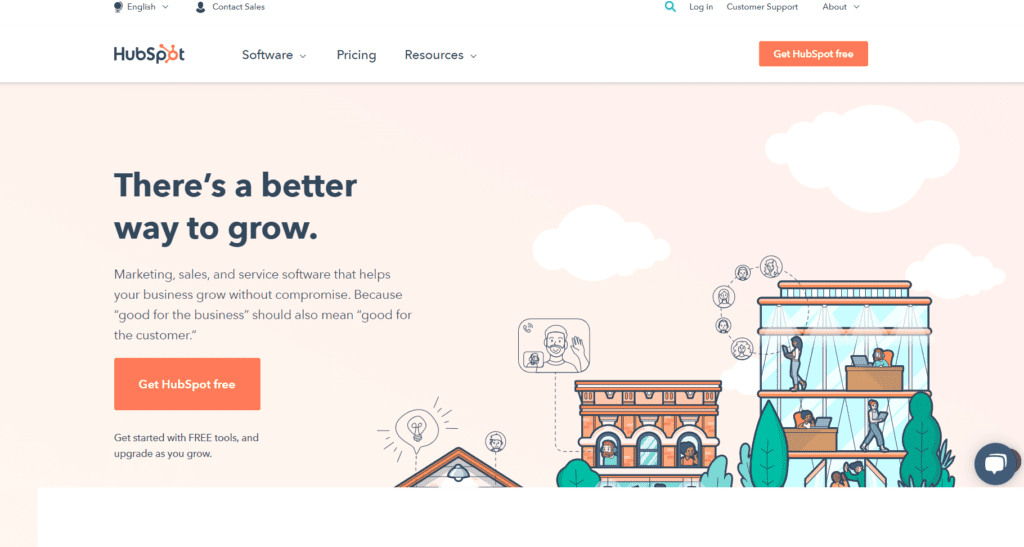Improving your sales numbers through good marketing requires data. Sales tracking software can help you plug that data gap and start making data-driven decisions.
40% of marketers said that better data would help them improve their marketing.
And they’re not wrong.
When you’re struggling with long customer journeys, hard-to-track marketing touchpoints and offline conversions, it can be hard to know where to begin when it comes to getting better data.
But, there is a solution.
With the right tools in place, you can make sense of your data without any hard work or Excel spreadsheets.
In this blog, we’ll go through:
Let’s get started.
Sales tracking software is any software tool that allows businesses to better understand their sales results and activity.
Sales tracking tools can help you better understand your target audiences, how marketing influences revenue and identify sales pipeline problems.
With these tools in place, you’ll have more data at your disposal to make smarter decisions about your sales and marketing activity.
Related: How to make data-driven decisions easily
There are plenty of reasons to integrate new tools into your tech stack. But sometimes, it can be tricky getting the sign off needed to invest in a new tool.
If you’re struggling with any of the problems listed below, then chances are you would benefit from a sales tracking tool.
So, let’s go through them one by one and look at how sales tracking software can support you.
Ideally, your sales and marketing teams are working towards the same goals and KPIs. However, in many businesses, this isn’t the case.
Related: How to achieve sales and marketing alignment
Often in B2B companies, marketers are tasked to increase leads, and sales are charged with closing new business.
This individual team view means that marketing has no responsibility for revenue. And, due to a lack of data, sales have no way to report back on the quality of the inbound leads.
By implementing a sales tracking tool, you can align your teams so they can use the same data and aim for the same targets.
Customer journeys are getting longer and longer. Gone are the days of landing on a website and converting first time.
Users have so much data at their fingertips that they spend much more time researching and comparing options to make sure they’re getting the best deal, and the best fit.
But this poses a significant challenge for marketers.
With all of this data in play, we’re talking potentially hundreds of touchpoints per lead and customer, marketers are struggling to effectively track users across their customer journey.
And because of this, they can’t prove ROI.
🚀 Pro Tip
Want tips on tracking every step your user takes from their first touchpoint till they close? You can track the full customer journey end to end with the right tools in place.
Learn how to track full customer journeys.
With less data at your disposal and with more difficulty proving ROI, it’s no surprise that businesses would consequently struggle to forecast revenue.
And this is a real issue.
Related: How to track and forecast revenue with Ruler Analytics
Forecasting revenue can help you predict how much money your business is making, and can make.
Are you struggling to properly view your pipeline and how much is in each stage? Or even better, how to view which channels drive revenue that moves through the pipeline?
With a sales tracking tool in place, you can get a full view of your pipeline plus understand:
So, now you know what sales tracking software can support with, let’s see which ones should be at the top of your list.
The potential benefits of sales tracking software are numerous, so let’s look at some options you should consider.
Remember, not all of these will solve every issue you might be facing.
It might be a case of upgrading a number of tools in your marketing and sales tech stack to ensure you have a well-rounded selection.
To help, we pulled out 9 of our favourite sales tracking tools:
Call us biased, but Ruler Analytics is a fantastic tool to better understand where your sales are coming from and how to drive more meaningful results for your business.

A marketing attribution tool, Ruler Analytics allows marketers to get to the bottom of their data. With full customer journey tracking and closed-loop attribution, businesses can definitively prove which marketing channels, campaigns and ads are driving the most money.
This gives marketers the insight they need to optimise their campaigns and encourage lean growth for their business.
Attribution is a common tool used to align sales and marketing teams as it gives both further insight into the types of leads they’re driving and how revenue is moving along the pipeline.
Pricing: Prices start at £199 per month
Book a demo of Ruler Analytics to see the data in action or learn everything you can discover in Ruler.
For more efficient sales tracking, you should definitely consider Salesflare. This sales CRM allows users to keep track of leads and customers by correlating information from other sources.
It offers a range of reports and dashboards to better understand your current performance and also supports sales reps to better nurture their leads and opportunities with features like automatic follow-up notifications and email signature syncing.
Pricing: Prices start at $29 per month
EngageBay is a great sales tracking tool used by many small businesses. It actually also offers a free forever package too if you’re only dealing with low numbers of contacts.

This tool integrates seamlessly with Gmail and Office 365 to better sync inbound and outbound emails to leads and customers. It also offers SMS broadcasting, automated emails and multiple deal pipelines.
Pricing: The sales and CRM function has a free option, but paid prices start at $10 per month.
Pipedrive, like a number of other tools on this list, is an all-encompassing CRM tool. While it does offer sales tracking software, it’s more widely used as a general CRM.
With Pipedrive in play, you can expect better lead management and lead nurturing as well as pipeline automation.
For example, they offer a tool where sales reps will be notified if a lead has been sat stagnant for too long.
Pricing: Prices start at £14.90 per month for the Essential plan which doesn’t include all of their sales tracking tools.
HubSpot is another fantastic CRM tool that doubles as sales tracking software. With a robust CRM system as well as built- tools for marketing teams, HubSpot is a fantastic option for larger businesses.

HubSpot does come at a price but it can offer functionality like sales pipeline management and automation. It’s also great for activity logging where you can analyse sales rep activity against results and quota.
Related: Guide to HubSpot attribution
Pricing: HubSpot offers a free tool but this is a very rudimentary version of the full application. Paid plans for sales start at £38 per month.
Zoho CRM offers advanced sales tracking reporting to better understand the full sales cycle.
You can create bespoke dashboards for key stats on sales and leads including options for target meters and funnels. Since this tool is also a CRM, you can easily blend data hosted within your CRM for a deeper understanding of your sales performance. You can also automate your workflows for easier sales processing.
Pricing: Prices start at £12 per month.
FreshSales is another popular CRM and sales tracking tool. It provides users with a 360 view of their leads and customers and vital statistics like conversion rate and demographic stats.
For simple lead and sales tracking, FreshSales offers a free version which is a great option. But for more dashboard capabilities and more options with automation, then you would need to upgrade your plan.
Pricing: Prices start at £12 per month for their paid plan.
Nutshell offers a wide range of sales tracking tools that can benefit your business. You can quickly forecast your revenue, get clear insight on how current sales compare to your quota and correlate activity to your sales reps.
Alongside these important sales reporting capabilities, Nutshell also allows you to create automated sales messaging and contact management.
Pricing: Starts at $20 per month
Bitrix24 links your sales and marketing data so you can correlate marketing spend back to sales results. It gives you a clear understanding of your sales conversion rate so you can best optimise your sales processes.
Bitrix24 also offers a whole host of other tools and features that can support other teams and business requirements, but if you’re just looking for sales tracking, then this is a valid option.
Pricing: Prices start at $39 per month for the paid plan.
Improving your sales results can often feel like an uphill battle, but remember. The first step to improving your results is to assess where you are right now.
By getting valuable data flowing, you can make data-driven decisions that will positively impact your bottom line.
For us, it’s using Ruler and attribution. With it in play, we’ve been able to quickly identify which initiatives are driving the best-quality leads. We’ve also identified content that drives leads but isn’t converted – which has helped us further refine our sales pitches.
By seeing data laid out in a clear, easy to understand format, you can better track your sales activity and understand the opportunities that will most likely result in reward.
Book a demo of Ruler Analytics to see attribution data in action. Or, learn more about why you need to implement an attribution tool like ours into your tech stack.